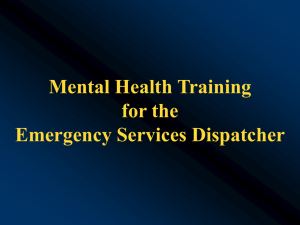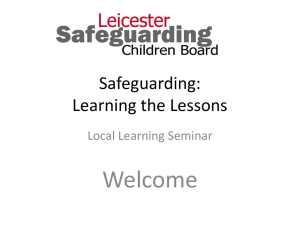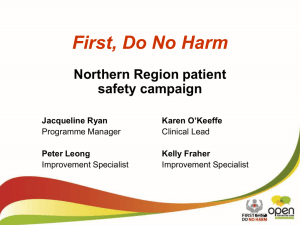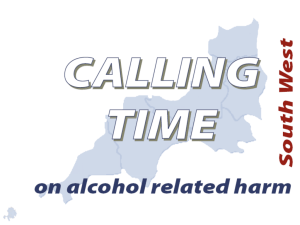PowerPoint slides - Counseling Center Village
advertisement
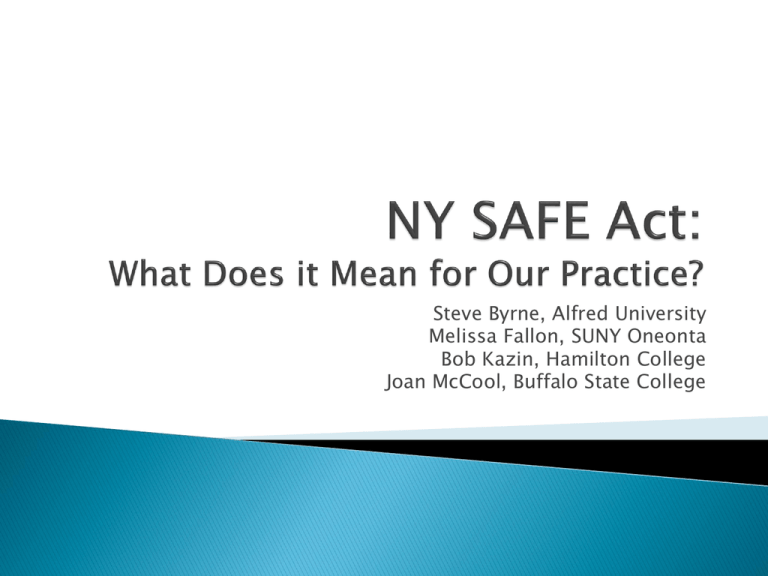
Steve Byrne, Alfred University Melissa Fallon, SUNY Oneonta Bob Kazin, Hamilton College Joan McCool, Buffalo State College Disclaimer “Notwithstanding any other law to the contrary, when a mental health professional currently providing treatment services to a person determines, in the exercise of reasonable professional judgment, that such a person is likely to engage in conduct that would result in serious harm to self or others, he or she shall be required to report, as soon as practicable, to the director of community services, or the director’s designee, who shall report to the division of criminal justice services whenever he or she agrees that the person is likely to engage in such conduct. Information transmitted to the division of criminal justice services shall be limited to names and other non-clinical identifying information, which may only be used for determining whether a license issued pursuant to section 400.00 of the penal law should be suspended or revoked, or for determining whether a person is ineligible for a license issued pursuant to section 400.00 of the penal law, or is no longer permitted under state or federal law to possess a firearm. Nothing in this section shall be construed to require a mental health professional to take any action which, in the exercise of reasonable professional judgment, would endanger such mental health professional or increase the danger to a potential victim or victims. The decision of a mental health professional to disclose or not to disclose in accordance with this section, when made reasonably and in good faith, shall not be the basis for any civil or criminal liability of such mental health professional. When a client is “likely to engage in conduct that will cause serious harm to self or others.” Per OMH guidance document, reporters should make the report under the same circumstances that would warrant an emergency “removal” to a psychiatric hospital Section 9.46 vs. 2PC reporting differences ◦ Dangerous behavior/threats vs. not Make report “as soon as practicable” to DCS ◦ Locate your DCS: http://www.clmhd.org/contact_local_mental_hygien e_departments/ ◦ Make a report: http://nysafe.omh.ny.gov Clinicians can choose to not make a report is doing so would endanger the potential victims and/or reporter Provides immunity from civil and criminal liability Physicians (including Psychiatrists) Psychologists RNs LCSWs Presumably: ◦ Postdoctoral psychology fellows/unlicensed psychologists in exempt settings • • • • • • LMHCs (and counseling trainees) MFTs LMSWs Creative Arts Therapists Psychoanalysts Unless a mandated reporter has direct contact with the client, he/she cannot make a report for another clinician Does this preclude us from reporting clients who willingly go to the hospital for suicide/homicide risk? ◦ i.e., does a client’s willingness to go to the hospital or absence of suicidal/homicidal behaviors suggest that they are not likely to engage in conduct that will result in serious harm to self or others? • • • • When a student is transported to the hospital, do we have the responsibility to report? Or does the hospital? Because we send the student for evaluation, does this mean that the results of that evaluation should determine whether or not a report is made? MOU recommended Protocols for ensuring a report has been made – Should be in hospital discharge paperwork Depending on the makeup of your staff, it is possible that a suicidal/homicidal client may be seen in your office and sent for evaluation at the hospital, but not reported to DCS Issues of clinical responsibility? Office protocols to handle this? Its not clear that you have to changed your informed consent statement but our staff chose to change the form to include the NY Safe Act out of discomfort regarding the concern for the clients’ confidentiality. Our NY SAFE act statement was approved by SUNY Legal team and we are happy to share it. In January 2013, NY State passed legislation designed to limit a suicidal or homicidal person’s access to fire arms. This law requires mental health providers to alert the County Director of Community Services and the NY Department of Criminal Justice Services (DCJS) if a person is likely to engage in conduct that will result in serious harm to self or others. The DCJS will then identify if that person has a gun permit and may remove fire arms from their possession in order to protect the identified person or others. This law may also prevent impacted people from obtaining a gun permit for 5 years following a report to the DCJS. The Otsego County Director of Community Services is Susan Dalesandro, LCSW, CASAC. “Decision making with respect to a Section 9.46 report requires a clinical determination that a person’s clinical state creates either: “(a) a substantial risk of physical harm to the person, as manifested by threats of or attempts at suicide or serious bodily harm or other conduct demonstrating that the person is dangerous to himself or herself, or (b) a substantial risk of physical harm to other persons as manifested by homicidal or other violent behavior which places others in reasonable fear of serious physical harm.” NEW YORK SECURE AMMUNITION AND FIREARMS ENFORCEMENT ACT, NYS Office of Mental Health Guidance Document (http://www.omh.ny.gov/omhweb/safe_act/guidance_documents.html) “The law specifically provides that mental health professionals will not be subject to any civil or criminal liability if the professional’s decision with respect to whether or not to report was made “reasonably and in good faith.” NEW YORK SECURE AMMUNITION AND FIREARMS ENFORCEMENT ACT, NYS Office of Mental Health Guidance Document (http://www.omh.ny.gov/omhweb/safe_act/guidance_documents.html) • • • Providers need to document that they acted “reasonably and in good faith” and to document the basis for your clinical judgment According to SUNY Legal, there is more legal protection for providers who report than for providers who do not report under the safe act. Documentation is required under the law but it might be as important to document when you don’t report someone as opposed to when you do. The psychologist should document this assessment in the person's treatment record as well as the psychologist's reasons for concluding that the person does or does not trigger the reporting requirement under the SAFE Act. INFORMATION ABOUT THE NEW YORK SAFE ACT FOR PSYCHOLOGISTS As of February 11, 2013 Compiled by members of NYSPA's SAFE Act Task Force: Drs. Shane Owens (Chair), Roy Aranda, Lou Jacobson, Joe Scroppo, Julie Fink-Sullivan, June Feder (Legislative Committee Chair), Eric Neblung (NYSPA President) • • • • Did you (or your supervisor) report the student to the Department of Criminal Justice in accordance with the NYS Mental Health Law .946/ Safe Act requirements? (if yes, note date and time of reporting) Summary of risk factors to self or other (include rational for decision regarding whether the student met criteria for reporting) With whom did you consult about this decision? If the student went to the hospital or meets with other mandated reporters, you should report your decision about reporting to their other providers. Please document with whom you communicated with regarding the decision, if any. • • • Hospitalized students we are not reporting to the County Director of Community Services We consult on anyone who is close or approaches the criteria for hospitalization This is not very definitive criteria admittedly but if the provider is asking the question about whether the person needs to be hospitalized for threat to self and/or other then we document in this type of note. Female, 18 y.o., Afr Am, history of depression with psychotic symptoms 1 previous hospitalization for visual and auditory hallucinations in July 2011 (bugs on ceiling and voices telling her to hurt herself), self-injury history of SI with plans but no previous attempts, cites parents and religion as protective factors Did you (or your supervisor) report the student to the Department of Criminal Justice in accordance with the NYS Mental Health Law .946/ Safe Act requirements? (if yes, note date and time of reporting) Client was not reported to DCJS under NY Safe ACT. Summary of risk factors to self or other It was determined that the student did not meet criteria for mandatory reporting because the student was not imminently suicidal when counselor met with her. The student denied any current plan or intention to hurt herself or anyone else. The student was referred to the hospital because she was experiencing auditory and visual hallucinations (muffled voice, scary music and ghosts and skeletons but no command hallucinations), unable to sleep, and appeared unable to care for herself (not attending classes or eating). Summary of risk factors to self or other (cont.) She has a past history of command hallucinations that tell her to hurt herself, but she was not experiencing these currently and so deemed not to be in immediate risk of harm to self or others. She presented voluntarily for services and has agreed to go to Bassett Hospital to prevent the hallucinations from increasing in frequency or severity. It was determined that the student met criteria for the .941 under the grievously disturbed criteria and not the imminent threat to self or others. At no time currently or in the past is there any knowledge that the client had homicidal ideation or plan. With whom did you consult about this decision? Natalie was seen by Counselor B.R. who consulted with this writer. I also consulted (without revealing the client’s name or other identifying information) with the Associate Vice President of Student Development Jeanne Miller Ph.D. Both agreed that the client did not meet criteria for reporting under the SAFE Act. If the student went to the hospital or meets with other mandated reporters, you should report your decision about reporting to their other providers. Please document with whom you communicated with regarding the decision, if any. I called Bassett Hospital Crisis Unit and communicated with nurse Mary McCarthy that we did not feel the student met criteria for mandatory reporting under the Safe Act and were not reporting the student. Bassett stated they did not report her to the DCS/DCJS either.

